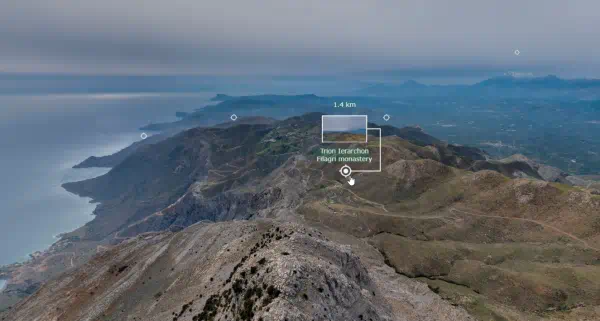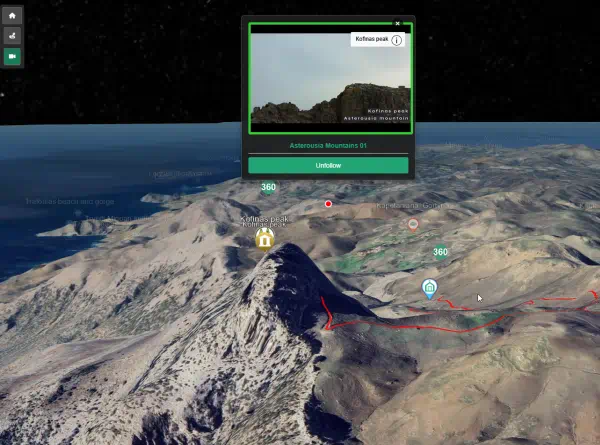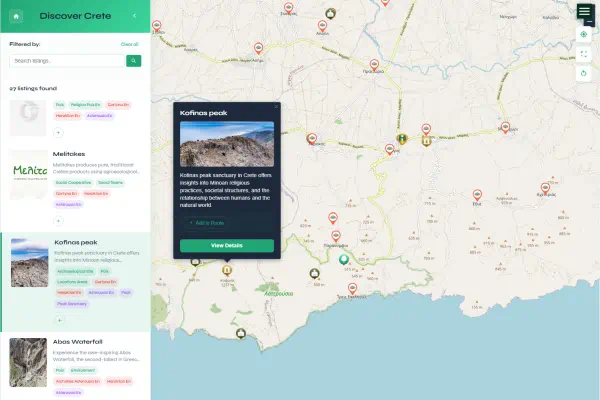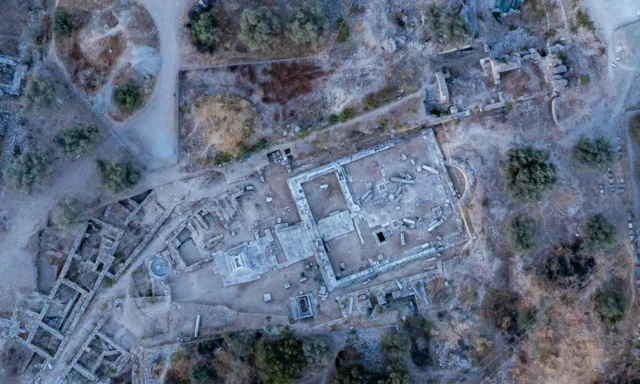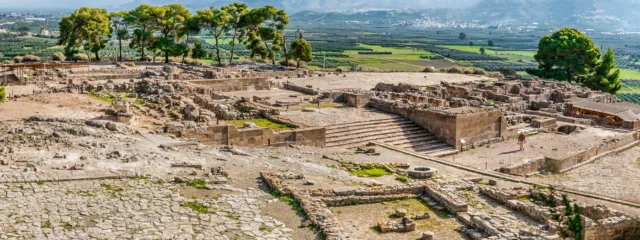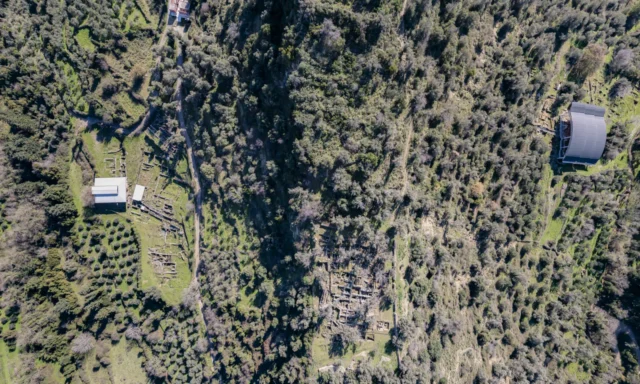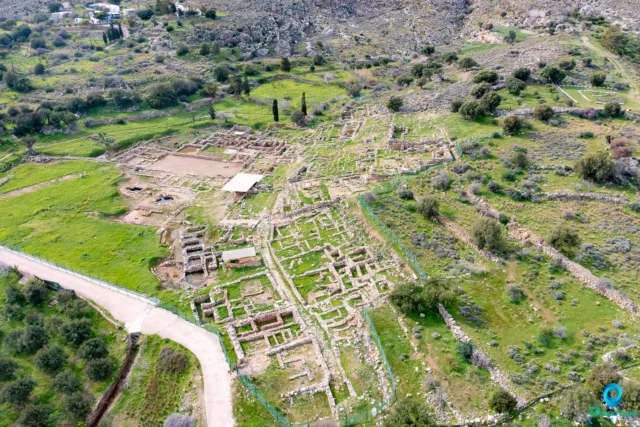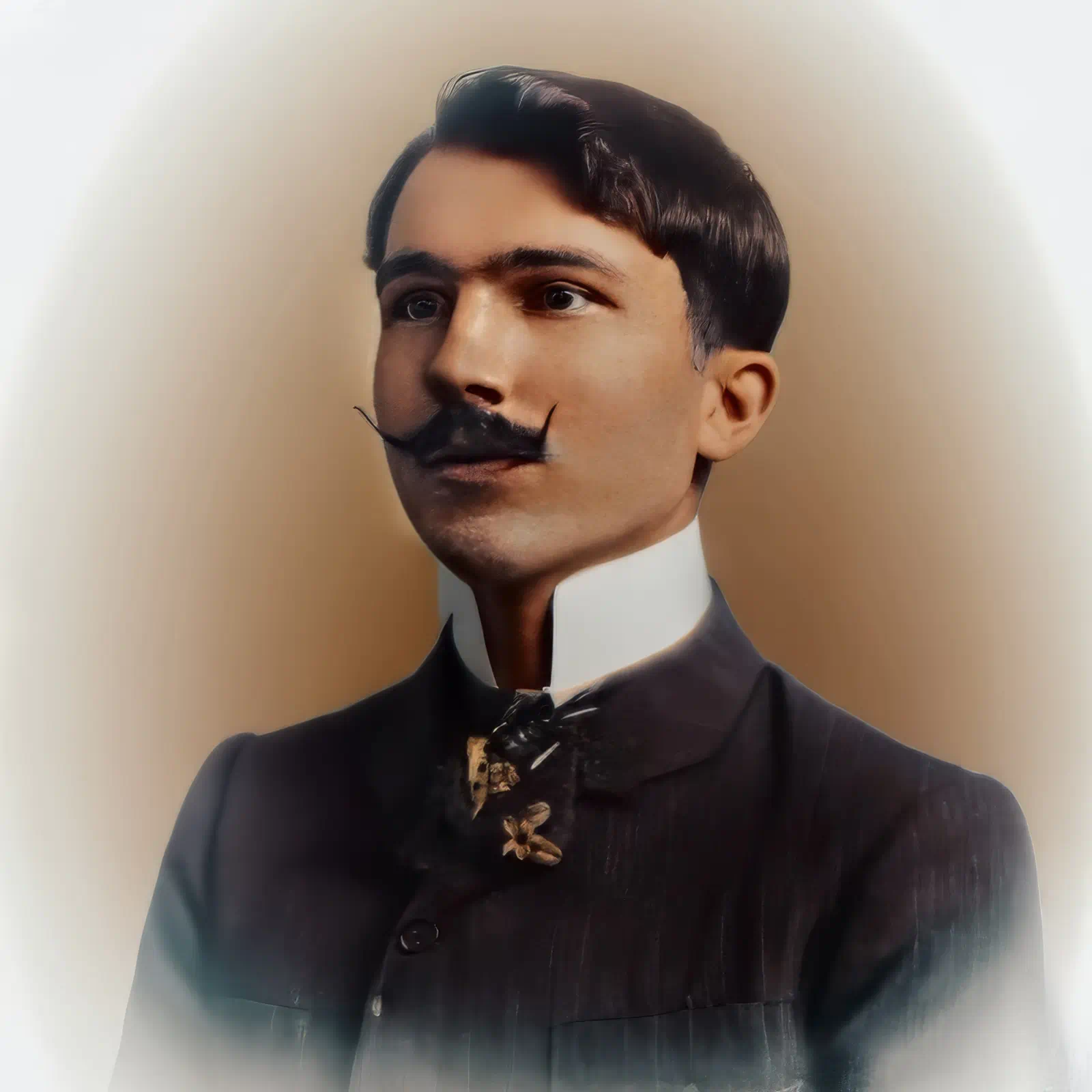Nikos Kazantzakis
Biography of Nikos Kazantzakis
A Literary Odyssey Rooted in Crete
Nikos Kazantzakis was a prolific writer, philosopher, and traveler whose works have left an enduring mark on the world. His novels, plays, poems, and travelogues explored themes of spirituality, existentialism, and the human condition, often drawing inspiration from his Cretan roots and his extensive travels.
He used the geography, history, and culture of his home island as a background for exploring universal human subjects. In his work, features of the Cretan landscape, like the streets of Heraklion, the ruins of Knossos, and the peaks of Psiloritis, became symbols for the struggle for freedom.
His life’s work consistently revisited and reinterpreted his homeland. Consequently, the modern identity of Crete is now viewed through the perspective of his writings. From official sites like the museum in Myrtia and his tomb on the Martinengo Bastion, to tourist locations like “Zorba’s Beach” at Stavros, the island’s story is connected with his. He did more than write about Crete; he helped shape the Crete we know today, turning its physical geography into a representation of universal human experiences.
Heraklion (Meghalo Kastro): A Childhood Under Siege
Kazantzakis was born in 1883 in Heraklion, a city under the rule of the Ottoman Empire. The city was an unstable environment with ongoing tension between communities. This setting shaped his view of life as a constant struggle between opposing sides.
This understanding was affected by the massacre of 1889. In his memoirs, he writes about being a child barricaded inside his home as Turkish groups moved through the streets. His father, Kapetan Michalis, guarded the door with a gun and a knife. He had decided to kill his family himself rather than let them be captured. This experience—the confinement, the threat of death, and the choice between two ways to die—formed the basis for his focus on the relationship between freedom and death.
This personal experience was later used in his novel Freedom or Death. The fictional city in the book is a direct representation of the city where he grew up. The main character, Captain Mihális, is based on Kazantzakis’s own father. The novel is based on the conflicts of Heraklion.
The Martinengo Bastion: A Final Defiance
Heraklion was the site of his birth and, after his death, a final conflict. Following his death in Germany in 1957, the Greek Orthodox Church, which had condemned some of his works, refused his burial in a cemetery. In response, his body was flown to Crete and laid in state in the Cathedral of Saint Minas. On November 6, 1957, thousands of people in a large procession followed his coffin to its burial site on the Martinengo Bastion, the highest point of the city’s Venetian walls. A local legend states that a large man came from the hills to perform the burial, which contributed to the author’s popular image.
The location of the tomb is symbolic. Placed outside the church grounds that rejected him, it overlooks the city, sea, and mountains. His simple grave has a wooden cross and a stone plaque with his well-known epitaph: “I hope for nothing. I fear nothing. I am free.” (Δεν ελπίζω τίποτα. Δε φοβούμαι τίποτα. Είμαι λέφτερος.). This statement reflects his personal philosophy, which was influenced by Buddhist thought and detailed in his work Spiritual Exercises. The epitaph represents freedom achieved by moving beyond hope and fear.
The places in Heraklion connected to Kazantzakis’s life show his philosophical path. His life started in a barricaded house during the 1889 massacre, an environment defined by fear and the hope to survive. His life of travel and learning was a process of moving beyond such limitations. His tomb on the Martinengo Bastion is the opposite of the enclosed house. It is open and exposed, symbolizing a state of being that has overcome the initial struggles. The epitaph is a clear declaration of this freedom from the emotions that marked his childhood. Therefore, the geography of his life in Heraklion illustrates his journey from a life of struggle against outside forces to one of inner freedom.
Roots in Myrtia and Kryoneri
While Nikos Kazantzakis was born in Heraklion, Crete, his family ties extended beyond the capital. His paternal roots were firmly planted in the village of Varvari, now known as Myrtia, situated in the foothills of Mount Psiloritis. It was in Myrtia that Kazantzakis spent his early childhood, absorbing the sights and sounds of rural Cretan life. The village’s landscapes, with their olive groves, vineyards, and the imposing presence of Mount Psiloritis, profoundly shaped his imagination and found their way into his writing. Myrtia’s traditions, the daily rhythms of its people, and the stories passed down through generations became integral to his creative spirit. Today, the Nikos Kazantzakis Museum in Myrtia stands as a tribute to the writer’s enduring connection to his ancestral home.
Adding another layer to his family history, Kazantzakis’ maternal roots can be traced to the village of Kryoneri in the Mylopotamos municipality. Kryoneri recently honored Marge Christodoulaki-Kazantzakis, the mother of the renowned author, in a modest event organized by the cultural association “ASSYROTOI.” This recognition highlights the importance of both Myrtia and Kryoneri in shaping the identity of one of Greece’s most celebrated literary figures.
The Nikos Kazantzakis Museum as Living Memory
In 1983, Myrtia village became a significant destination with the founding of the Nikos Kazantzakis Museum. The project was led by Giorgos Anemogiannis, a stage designer and family friend. He established the museum on the site of his own family home, where Kazantzakis had often been a guest. The museum’s goal is to preserve the author’s memory and promote his work, and it has turned the village into a destination for people interested in his writing.
The museum’s collection offers insight into the author’s life and work, holding over 50,000 items. These include manuscripts and notes for his works, first editions of his books in many languages, his extensive correspondence with major thinkers and artists, photographs, and personal items from his travels. These artifacts show his creative process and his continuous intellectual activity.
The museum’s existence in Myrtia highlights a contrast between a personal origin and an organized, public legacy. The village’s initial importance to Kazantzakis was private and related to his family. The creation of the museum, while an act of respect, is also an act of interpretation. It selects and organizes his life for a global audience, turning the idea of “ancestral roots” into a tangible cultural site. This process is similar to Kazantzakis’s own artistic method. He took the personal material of his Cretan experience and shaped it into universal literary works. The museum in Myrtia is therefore not just a monument to Kazantzakis; it is a physical example of his own process of turning the local into the global.
Lentas: A Sanctuary for the Soul
The coastal village of Lentas, on the southern coast of Crete, held a special place in Kazantzakis’s heart. He frequently sought refuge in this secluded haven, finding solace and inspiration in its tranquil beauty. It was in Lentas that Kazantzakis penned some of his most celebrated works, including parts of his epic poem, the Odyssey. The village’s dramatic cliffs, pristine beaches, and the ancient ruins of Levin, a once-thriving city, provided a fitting backdrop for his creative endeavors. Lentas was more than just a retreat for Kazantzakis; it was a sanctuary where he could connect with his inner self and tap into the creative forces that fueled his writing.
Mount Psiloritis: The Mountain of the Soul
Mount Psiloritis, the highest mountain in Crete, loomed large in Kazantzakis’s consciousness. Its majestic presence, steeped in mythology and folklore, symbolized the indomitable spirit of the Cretan people. Kazantzakis often hiked its slopes, finding spiritual renewal and creative energy in its embrace. The mountain’s rugged terrain and panoramic vistas mirrored the challenges and triumphs of the human journey, themes that he explored extensively in his writings. Psiloritis was not just a geographical landmark for Kazantzakis; it was a spiritual touchstone, a place where he could commune with the deeper forces of nature and the universe.
Zorba’s Coast: The Cinematic Imprint on Western Crete
Perhaps the most globally recognized representation of the Cretan spirit is Alexis Zorba, the protagonist of Zorba the Greek. However, the connection between this iconic character and the specific landscape of Crete is a fascinating case of cinematic myth-making. The historical reality is that the man who inspired the character, Giorgos Zorbas, was a Macedonian miner, and his formative friendship with Kazantzakis took place not in Crete, but in the Mani region of the Peloponnese peninsula. The novel itself is set vaguely on the Cretan coast, but it was the 1964 film adaptation that indelibly fused the story with a specific geography: the stunning Stavros Beach on the Akrotiri Peninsula, near Chania, and the nearby village of Kokkino Chorio.
The film’s final scene, where Anthony Quinn as Zorba teaches the bookish Basil to dance the sirtaki against the backdrop of the distinctive camel-shaped mountain, became a global cinematic icon. This powerful visual image has since reshaped the reality of the place. A powerful feedback loop was created, turning Stavros into “Zorba’s Beach,” a destination for tourists seeking to experience the “Zorba spirit” of Dionysian life-affirmation. Today, local tavernas play the film’s famous score by Mikis Theodorakis and display movie memorabilia, catering to a myth that the film itself created.
Aspect | Historical Reality (Giorgos Zorbas & Kazantzakis) | Literary & Cinematic Representation (Alexis Zorba) |
Identity/Origin | Giorgos Zorbas, a Macedonian miner from Pieria. | Alexis Zorba, an embodiment of the free-spirited Greek/Cretan soul. |
Primary Location | Prastova mine, near Stoupa in the Mani Peninsula. | A lignite mine on the coast of Crete; cinematically located at Stavros Beach, Akrotiri Peninsula. |
Central Enterprise | A lignite mine that ultimately failed. | A lignite mine whose spectacular collapse is a central scene. |
Key Philosophy | A real man with a carefree, restless personality who deeply impressed Kazantzakis with his “lust for life”. | A literary archetype of the Dionysian spirit, teaching a bookish intellectual to embrace life through dance and passion. |
Cultural Legacy | A personal friendship that inspired a novel. | A global symbol of the Cretan spirit, inextricably linked to the music of Theodorakis and the landscape of Stavros Beach. |
Witness to Atrocities: Kazantzakis’s 1945 Mission to Crete
In 1945, after the liberation of Greece, the government created the “Central Committee for the Ascertainment of Atrocities in Crete” to investigate war crimes committed during the German and Italian occupation in World War II. Nikos Kazantzakis was a key member, working with academics Ioannis Kalitsounakis and Ioannis Kakridis. From June 29 to August 6, 1945, they traveled through the island, collecting testimonies from survivors and compiling an official record of the occupiers’ actions. The resulting “Report on the Atrocities” is an important historical document. Kazantzakis kept a handwritten copy of the report, which was published in 1983 after being entrusted to the municipality of Heraklion.
Documenting Atrocities Across Crete
The committee’s report documents the specific locations of atrocities across the island. In the German-occupied zones, it details mass executions, forced labor, economic exploitation that led to famine, and the complete destruction of villages such as Kandanos, Skines, Vryses, Amiras, and Gerakari. These places are identified as sites of historical events that he officially recorded. The report also covers the prefecture of Lasithi, which was under Italian control. It documents the different nature of this occupation, which included looting, forced requisitions that caused famine, and violent retaliation against the resistance movement. This shows that the committee’s investigation covered the entire island.
Connection to His Philosophical Work
This direct, non-fictional work with extreme human suffering provides a real-world basis for Kazantzakis’s philosophical concepts. His journey through Crete in 1945 was a direct encounter with the suffering he often wrote about in a metaphorical sense. The details from the report—destroyed villages, mass executions, systemic starvation—are historical facts that he personally investigated. This experience creates a direct link between historical events and the philosophical ideas in his work. The concept of the “abyss” in his writing relates to the mass graves he learned about from survivors. The idea of “struggle” relates to the documented reality of the Cretan resistance and its consequences. His philosophical framework can be understood as an attempt to process and find meaning in the specific historical trauma he witnessed. His role as an official recorder of war crimes gives weight and authenticity to his literary explorations of suffering.
Kazantzakis’s Enduring Legacy
Nikos Kazantzakis had a significant impact on Greek and world literature. His works, translated into many languages, address the human experience. His exploration of themes such as spirituality, freedom, and the search for meaning remain relevant to contemporary readers. His legacy is particularly evident in Crete, where the island’s landscapes, people, and culture are closely associated with his writings.

